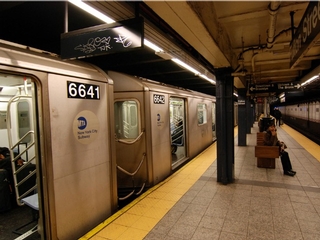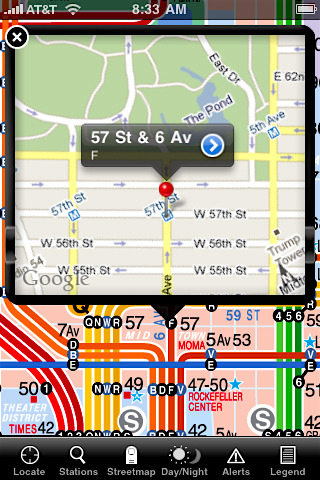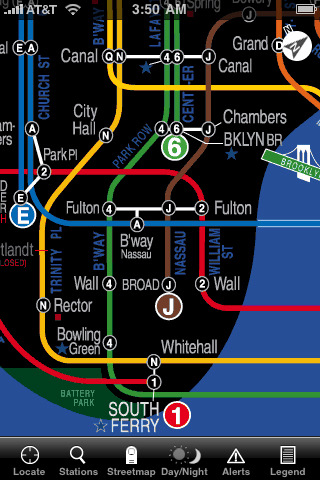What Every Visitor Needs to Know About the NYC Subway

Whether you’re a new visitor to New York City or a veteran pleasure or business traveler making regular stopovers, there’s one resource you can leverage for easy access to the best activities, food, drink, and neighborhoods the city has to offer – the subway. The purpose of this website is to educate the reader about the best New York has to offer both in Manhattan and beyond, but the East River looms as a barrier for many a visitor, and the reason is not hard to guess – it was the same reason I avoided the outer boros on my first few visits: taking a cab was prohibitively expensive and I was afraid to take the subway.
Well, fear not, intrepid reader. If you’ve made it this far you’ve probably decided your trip needs a little more flavor than a hop-on-hop-off bus tour of Times Square. The good news is the subway is nothing to fear. True, it can be a frustrating time-waster if you don’t know what you’re doing, but once you master a few simple principles, you’ll discover that taking the subway is actually a rush, and blending in with the locals – rather than needlessly scrutinizing a pocket map and craning your head to look out the window at every stop – will enhance your enjoyment.
Below, the chief ways the NYC subway is different from those of other cities, and our top tips for both experienced urbanites and novices.
1. Know the difference between local and express
I’ve taken the subway systems of many US cities – including Boston, Chicago, and SanFrancisco – and a good sample of international ones as well – London, Tapiei, Beijing… – and rarely in these other cities was there a distinction made between local and express service. Well, in New York it’s a big deal. Ask anyone who’s hopped on a D train at Rockefeller Center hoping to end up at Lincoln Center (at 66th street, just a few blocks away) and instead ended up at 125th Street.
Why are NYC trains different? In most other places, each line has its own complete circuit. In New York, both because of scarcity of space in hub locations and due to some wonky (and frankly quite fascinating for NYC buffs) history involving ownership of various lines, lines with different terminals (endpoints) often share some stretches of track in common, and the designers of the system made the best of this otherwise totally illogical design (the main reason for clogs and delays) by inventing a division of labor: if the F train, eventually bound for Forest Hills Queens, and the B, on its way to the Bronx, both run up 6th ave, the B can run express. Anyway, onto the practical implications-
Local trains stop at every stop, but run slowly over large distances. The good news is you can’t really go wrong – if you hop on, you’ll be able to hop off – eventually – at any stop on the line during normal weekday service (assuming you know where you’re going and have selected the proper line).
Express trains skip stops – sometimes a lot of stops. In the above example, if you board a local B or C train at 59th Street going uptown (we’ll cover uptown versus downtown below) you can get off at 72nd, 79th, 86th, 96th, 103rd, 110th, 116th, and finally 125th streets. If, however, you board an express A or D train, you’ll be going all the way to 125th from 59th in about 8 minutes. It’s awesome if that’s where you’re headed, not so much if it’s not.
So – how do you tell the difference?
-It’s sometimes difficult to determine from the subway map exactly which lines are local and which are express. I’ll outline it in the next sentence, but I first want to emphasize that the official subway map should not be your primary source of information about these things. Ok, if you’re squinting at the map, express stops are open circles, and the names of all the trains that stop are listed next to them. Closed, or black, circles, are local stops, and only the local trains are listed next to those. Hence, on any line, look at the local stops to see the local trains, and the ones you only see at the express stops are the express. See what I meant about it being difficult from the map.
If you’re a novice and you’re in the station, here’s how you tell
– use your eyes and ears. If you’re at an express stop on the platform facing the direction the trains are going, the trains that pull up to your left (toward the center of the tunnel) will be express, and those to your right (next to the wall) will be local. There are few exceptions, but this holds true a good 90% of the time.
Finally,
–Listen to the announcements! On every train the conductor is required to recite the following “this is a [destination] bound [LOCAL/EXPRESS] train.” In most of the newer cars, a robot voice does it for you.
If it sounds intimidating, it will make sense after a single ride, and just remember, there’s no irreversible subway mistake. You can always turn around and reverse course.
2. At Local Stations, Uptown and Downtown trains often have two different entrances
In every neighborhood article on this site, we’ll be specific about which direction to take the train. Obviously it saves you time to know which way you’re going, but it will also save you money. It a great many stations, especially in Manhattan, different directions of train have different entrances. This is another idiosyncrasy that most other subway systems don’t share, and it stems partly from the shallowness of the tunnels in some parts of the city, though other designers solve the problem in other ways other places (take for instance the 2/3 train stop at 110th street).
Whatever the reason it’s important to know. If you intend to take the L train to Bedford Ave (say to visit Williamsburg) and enter through the “Brooklyn Bound” entrance, you’re good-to-go. If however you enter across the street at the “8th Avenue Bound” entrance, you’ll have to exit the station, cross the street, and pay again to go in the proper direction. A few extra seconds of preparation and a proper map application for your smart phone will save you a ton of trouble.
Again, if all else fails, listen to the announcement – “this is a [CORRECT DIRECTION/INCORRECT DIRECTION] – bound train…”. If you’re on the wrong train and can jump off quickly, do. Don’t make a scene though. It’s always easier to ride to the next stop and change direction than to body check a gauntlet of commuters on your way out the door. Positive karma is real in NYC.
3. Weekday service is different from weekend, and 9pm is the “magic hour”
There are number of good reasons to visit New York during the work week, among them that the majority of us will be at our jobs instead of competing with you for spots in line, restaurant reservations, spots at the bar, or seats on the subway, and the fact that usually travel to and from the city on weekdays is cheaper. But the biggest advantage is probably that the subway runs predictably and regularly. Trains come without too long a wait, and they go where the map says they go. (If you get a good smart phone app, it will display the route changes in evenings and weekends.)
Best times to use the subway are-
-“Off Peak” hours weekdays – read, “when locals are not commuting to or from work.” In general that means from 10am – 3pm and from 7-9pm.
-Before 9pm – 9 seems to be the hour when a lot of subway lines turn into pumpkins. While official service usually continues until midnight (when “off hours” service ensues), the unofficial track switches (the most notorious and confusing for novices “this F train is now running along the A line”) and “funny business” seems to start around 9pm. For a hassle-free commute back to your hotel or home – without eating $40 for a cab – plan to be aboard the last train in your sequence before 9pm.
4. Get a good Smart Phone Application
This will save you both headache and embarrassment. The dirty not-so-little not-so-secret is that the official MTA New York City Subway Map is a “best case scenario, weekday before 9pm” guide, and even then it’s woefully hard to read, and various places both exaggerates and undersells the difficulty of a transfer, the distance overground between two lines, the distance of a trip, etc.
Get a good iPhone or Android app – Chih-Yu recommends Kick Map, currently $2.99 on the Apple App Store, but you can search the application store for one with good reviews. Make sure it does the following things-
-Is easy to read and makes easy distinctions between local and express stations. Kick Map does this.
-Shows adaptive maps depending on the hour. (Below is a night shot from Kickmap.)
Notice the difference between the thick ropes of lines connecting every point during the day, and just a single line at night? This is important.
-Updates itself every time there’s a service change in the subway system and notifies you via the App Store. You can read the descriptions of each to see if your chosen app does this.
If you’re traveling from overseas and won’t be using the internet capabilities of your phone while in NYC, make sure to update the app immediately before leaving. That will ensure you’ll have the most up-to-date info.
The adjunct advantage to using an application instead of (not great) the official subway map or (worse still) a pocket map from a travel book is you won’t stand out quite so sorely as a tourist. If you’re simply glancing at your iPhone, it’s a little less conspicuous than peering feverishly at the map on the wall every few stops.
5. Finally – get a good mental picture of your route and use your ears, not your eyes, to determine when to hop off.
Few things are more annoying to locals than people standing nose-to-nose with us because we happen to be seated in front of the wall-mounted subway map or tugging our sleeve asking “does this go to queens”. Yes, we’ll help you, but you also want to look cool, right?
-First, have an idea where you’re going. If you know in advance that you’re taking a downtown/brooklyn-bound F train (to visit Park Slope, for example), and follow the signs, you’ll end up on the proper platform.
-Next, listen to the announcement to confirm that you’re correct. As I wrote above, conductors are required to announce the type, speed, and destination of the train at every stop. If you have your route well in mind, listen to the announcements when you’re getting close, and prepare to exit when you’ve left the second-to-last stop. But don’t step in anybody’s way to the door. There’s enough time for everyone to get off without territorial behavior.
One final thing to keep in mind – these tips are good to have in mind. If you’ve read this far you have an overview. Don’t sweat the details, just get a subway map app and get out there and experience it!
 Beyond Manhattan Blog
Beyond Manhattan Blog

